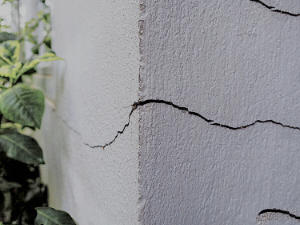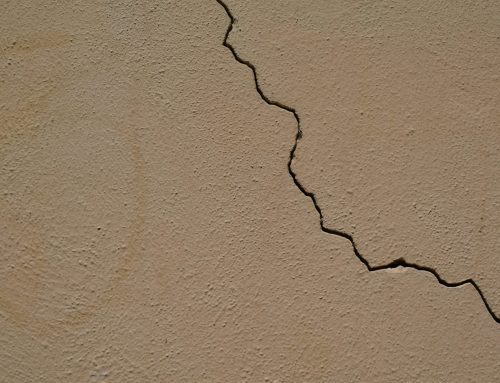Analyzing concrete and masonry  failures is essential for identifying the root causes of structural issues in homes, buildings, bridges and other forms of infrastructure. When concrete shows signs of significant cracking, spalling, or other forms of deterioration, a thorough investigation is needed to understand why it occurred and how it can be prevented in the future.
failures is essential for identifying the root causes of structural issues in homes, buildings, bridges and other forms of infrastructure. When concrete shows signs of significant cracking, spalling, or other forms of deterioration, a thorough investigation is needed to understand why it occurred and how it can be prevented in the future.
Concrete and masonry, like that in a building’s foundation, are subject to various stressors like weather conditions, chemical exposure, and mechanical loads over their lifespans. When issues arise, forensic investigators rely on a systematic approach to document damage, assess material quality, testing, and evaluate external factors that may have contributed to the failure. Through their detailed analysis, they can determine whether the failure occurred due to a design flaw, material defect, environmental influences, or improper maintenance, to guide repairs and help to prevent future issues.
Common Types of Concrete and Masonry Failures
While concrete and masonry can fail for various reasons, the most common are cracking and fracturing—cracks that appear due to factors like shrinkage, settlement, and thermal expansion. Identifying whether a crack is structural or non-structural is the first step in analyzing damage. Structural cracks can indicate foundational issues, while non-structural cracks may result from natural drying shrinkage.
Spalling and surface scaling are other common failures, often caused by exposure to freeze-thaw cycles or poor curing practices. Spalling appears as flaking or peeling. Efflorescence and staining, visible as white powdery deposits, occur when water migrates through concrete or masonry to carry soluble salts to the surface. These stains may not immediately threaten the structure, but often signal moisture issues that can accelerate deterioration.
Assessing Material Quality and Composition
Compression tests and chemical analysis help to determine if your concrete or masonry meets the required standards. Poor-quality materials can lead to premature failure, even under typical environmental conditions.
In addition to testing, we, as forensic investigators, can analyze the mix ratios, concrete air entrainment, and aggregates in concrete. An incorrect mix ratio can compromise durability, while inappropriate aggregate choices can affect the structure’s ability to withstand environmental stressors. We’ll check for corrosion or reinforcement issues, especially if the concrete structure is reinforced. Rusting of steel rebar, for instance, can expand within the concrete, causing it to crack or spall and weakening its overall strength.
Environmental and External Factors
Freeze-thaw cycles, extreme heat, and heavy precipitation can weaken concrete over time, causing cracks or spalling. Chemical exposure can also accelerate deterioration. Seismic activity and soil movement also play roles. Earthquakes, ground shifts, and soil erosion can cause foundational instability, leading to cracks and misalignment.
Documenting Evidence and Gathering Data
Photography and detailed visual documentation capture the extent and pattern of damage to help identify causative factors. Non-destructive testing (NDT) techniques such as ground-penetrating radar (GPR) and ultrasonic testing allow forensic investigators to examine internal damage without altering the structure.
We may also use core sampling. If we suspect issues with material composition or damage patterns within the concrete, core samples are removed and analyzed in a lab to help determine the causes more precisely.
Causation and Liability
The final stage of analysis involves determining the root cause of the failure and assessing any potential liability. We examine design and construction practices, looking at the design specifications, contractor practices, and construction techniques. Failures due to design flaws or inadequate materials may implicate the original builders or architects.
In addition, we look at maintenance records. Structures lacking regular upkeep are more likely to experience preventable damage, and we want to determine whether it was a lack of maintenance or prolonged neglect that contributed to or exacerbated the failure. Finally, we prepare a detailed report of our findings, along with photographs and evidence.
Concrete and Masonry Failure Analysis by Först Consulting Group
Först Consulting Group offers specialized expertise in forensic investigation of concrete and masonry failures throughout the Northern Virginia and Washington DC metropolitan area, helping clients to pinpoint the exact causes of structural issues and understand their implications.
We are highly qualified in masonry diagnostics to ensure our clients receive an accurate, comprehensive understanding of the issues at hand. We consider not only the physical state, but also the external factors that led to the failure. And we help our clients address immediate repair needs and offer guidance on how to prevent future problems. By choosing Först Consulting Group, you benefit from an investigative partner dedicated to enhancing structural integrity, reducing liability risks, and supporting long-term safety.
Contact Först Consulting Group
If you suspect an issue with your concrete or masonry, have it checked out by Först Consulting Group. Your quick attention could save you thousands in costly repair bills later on.
Contact Först Consulting Group.


